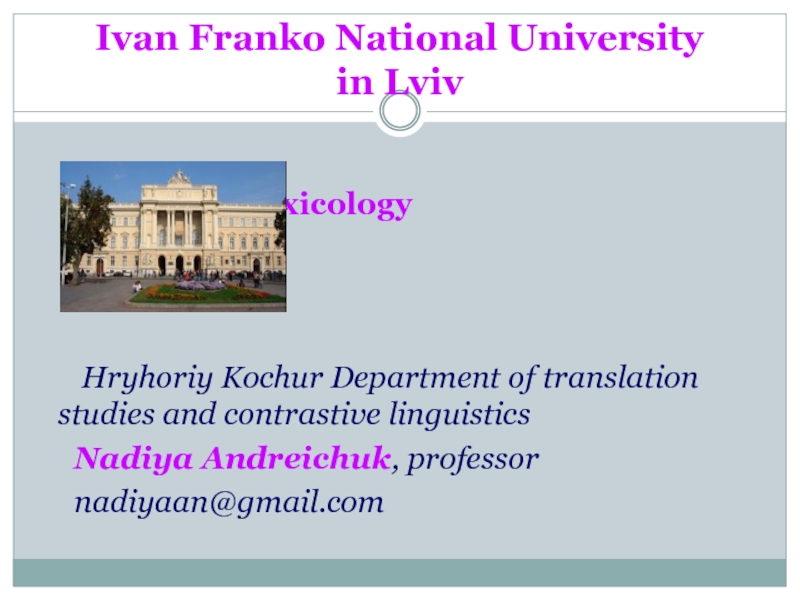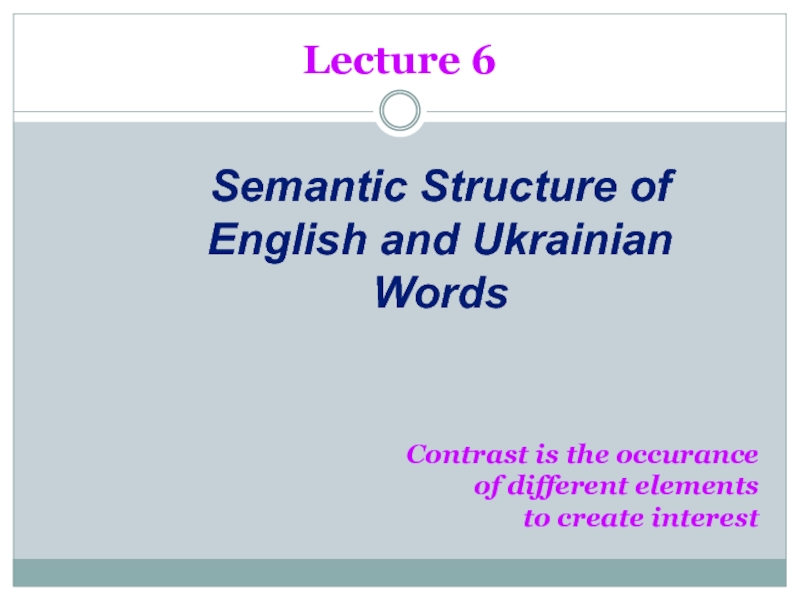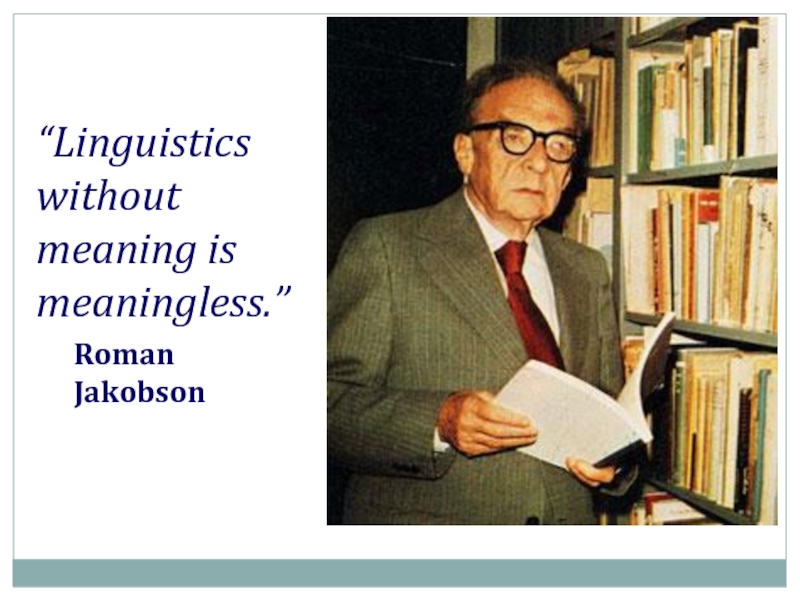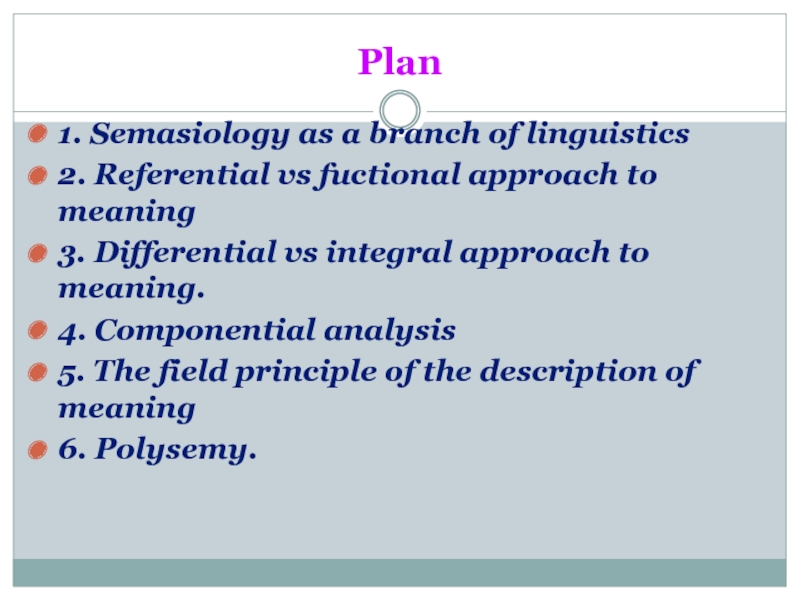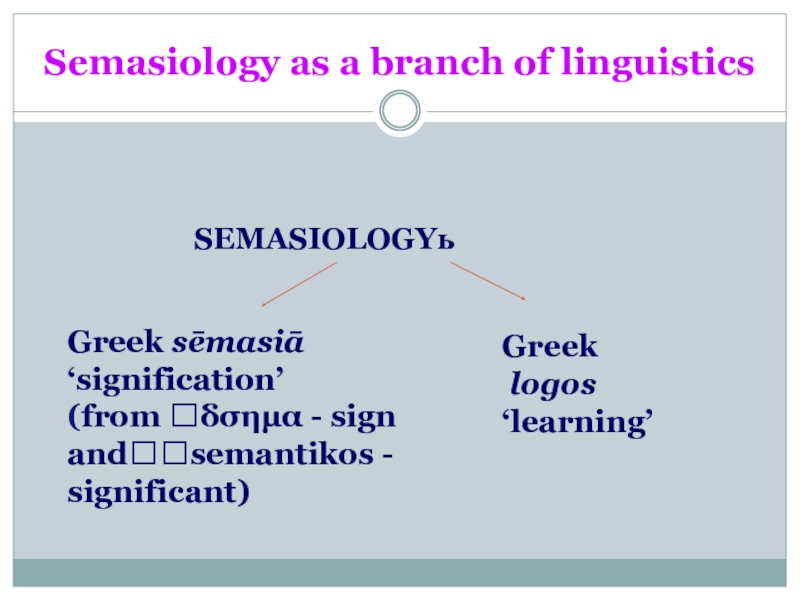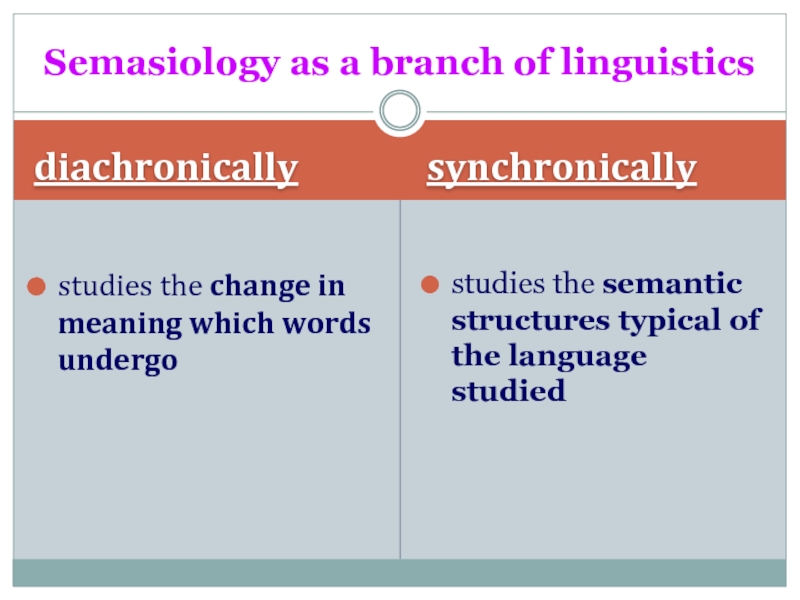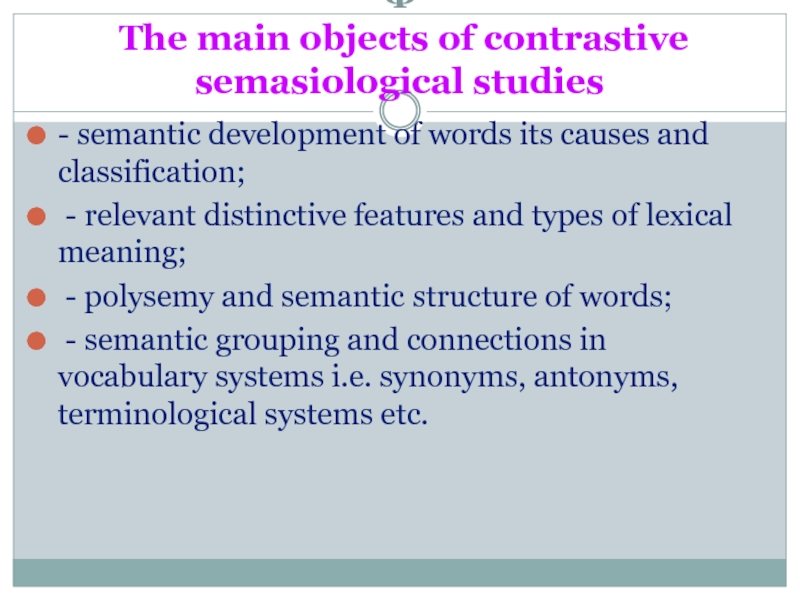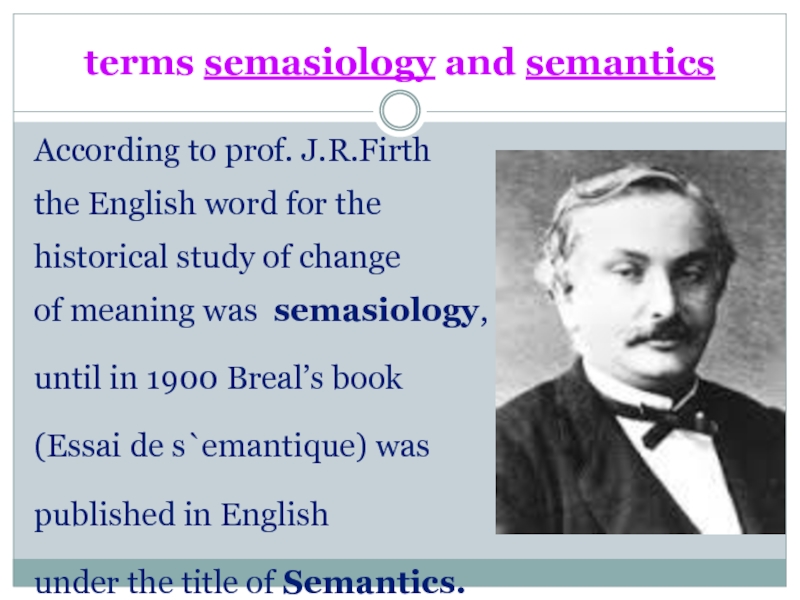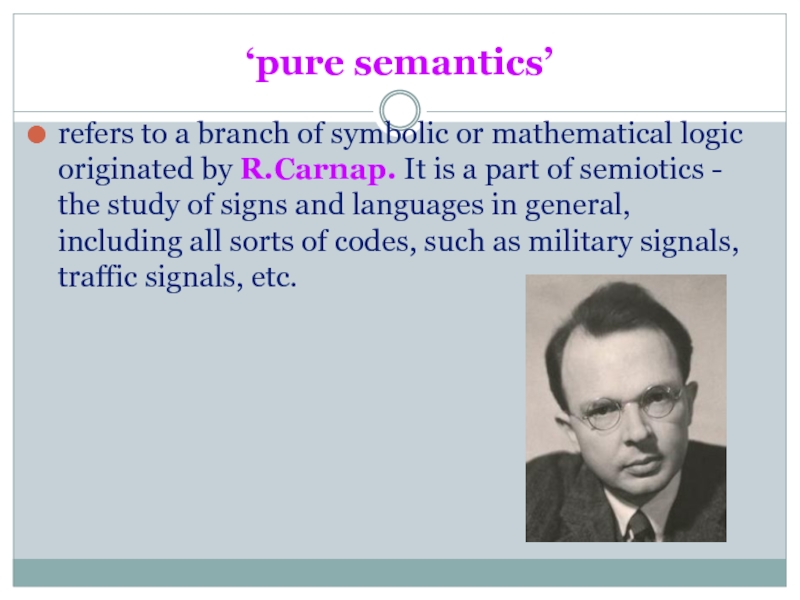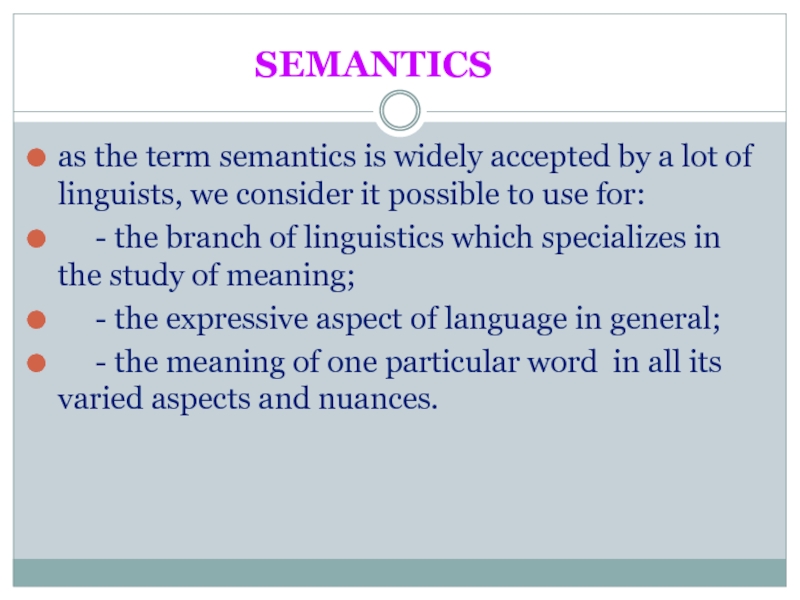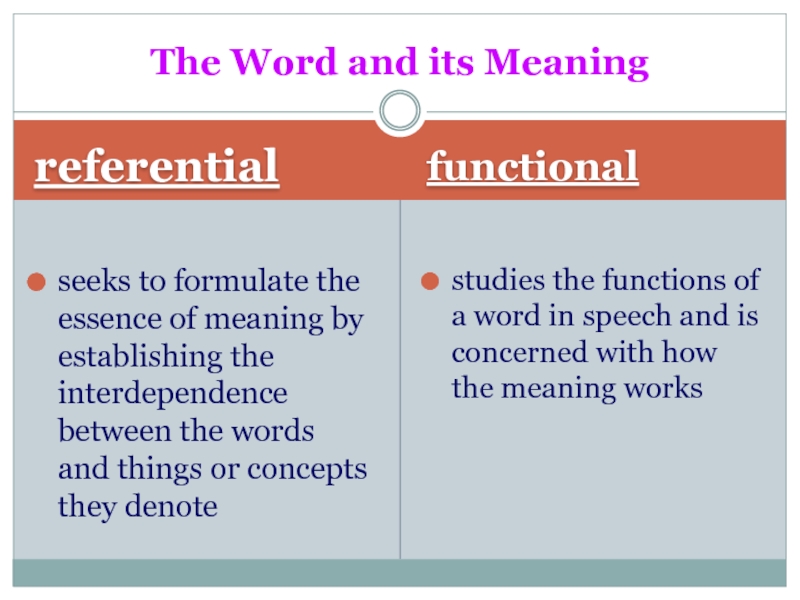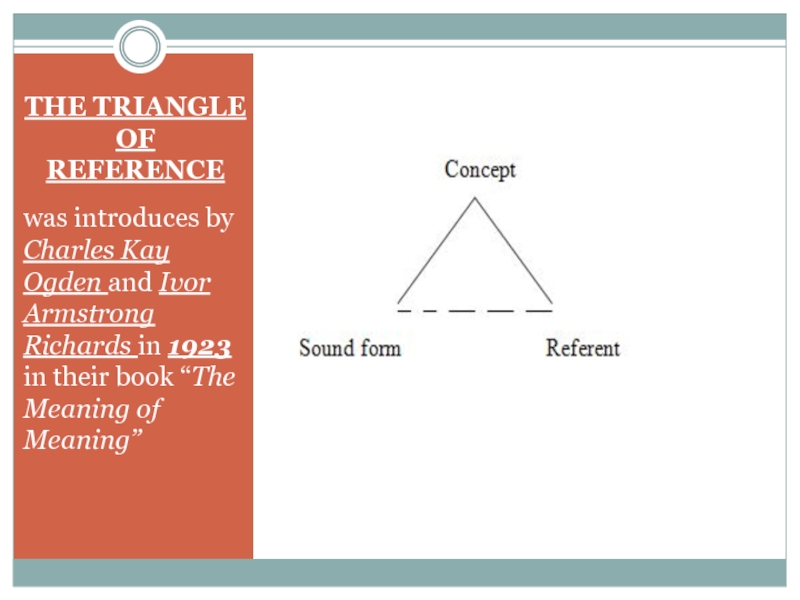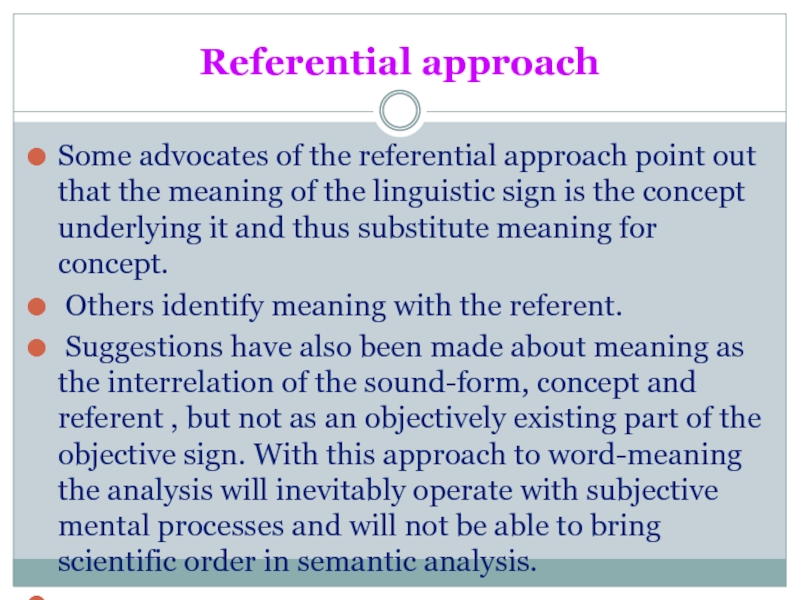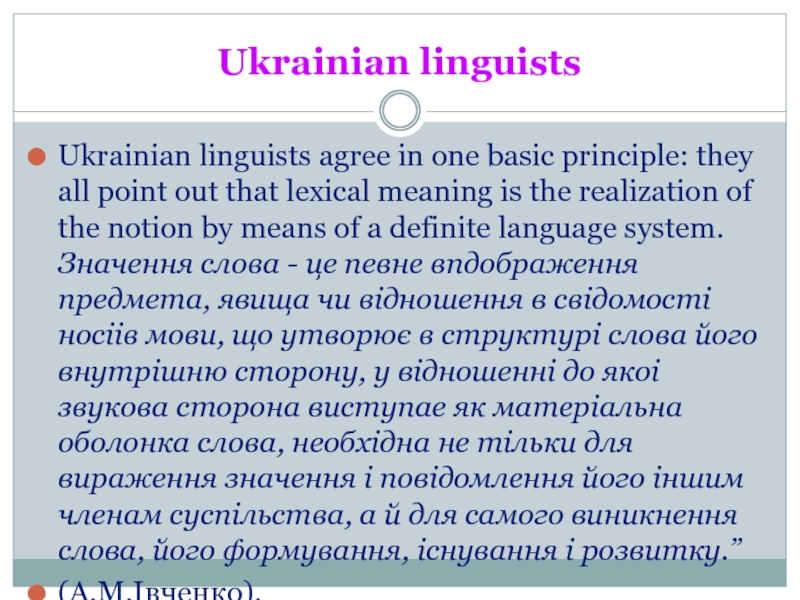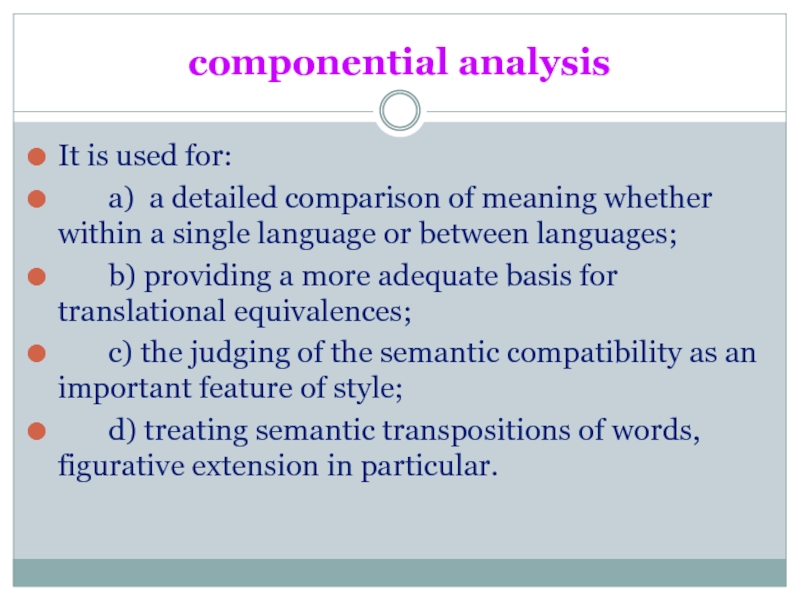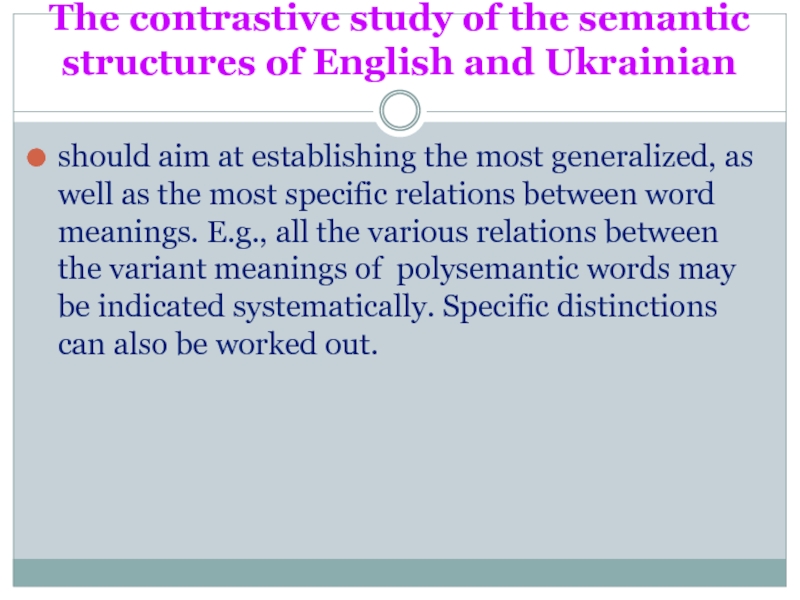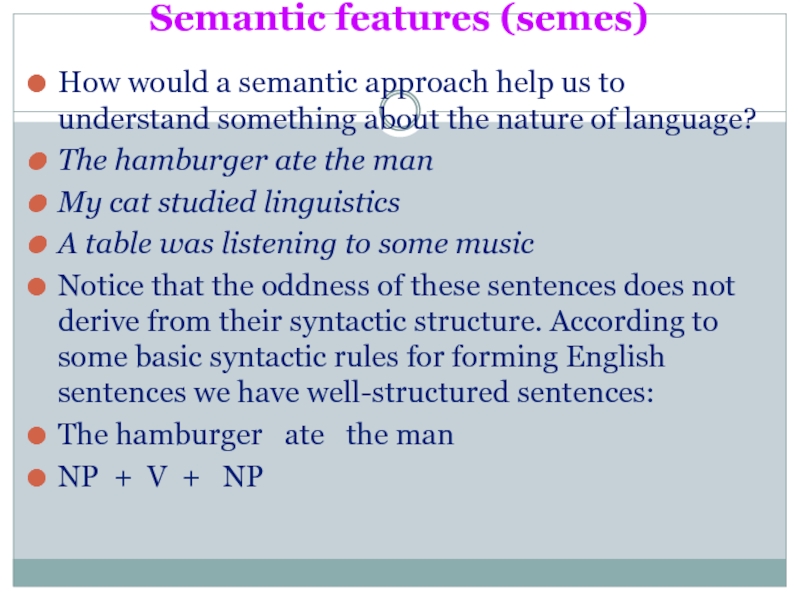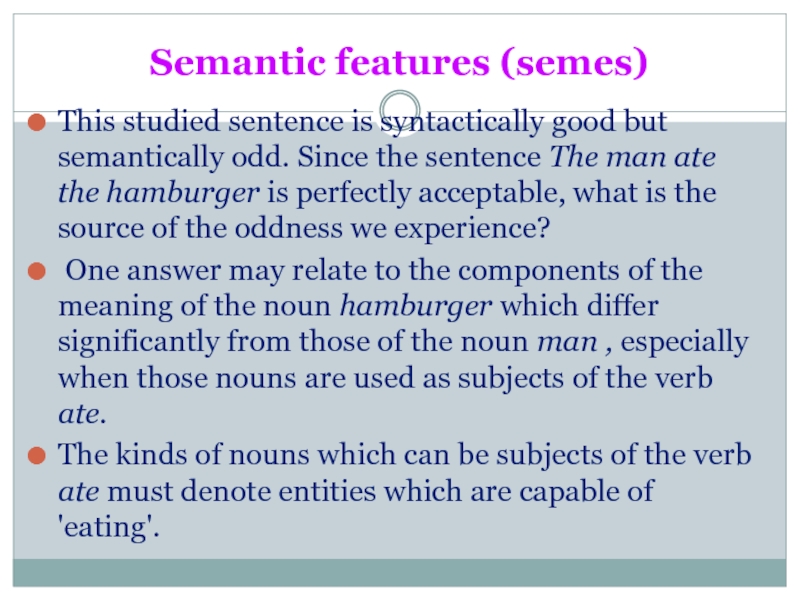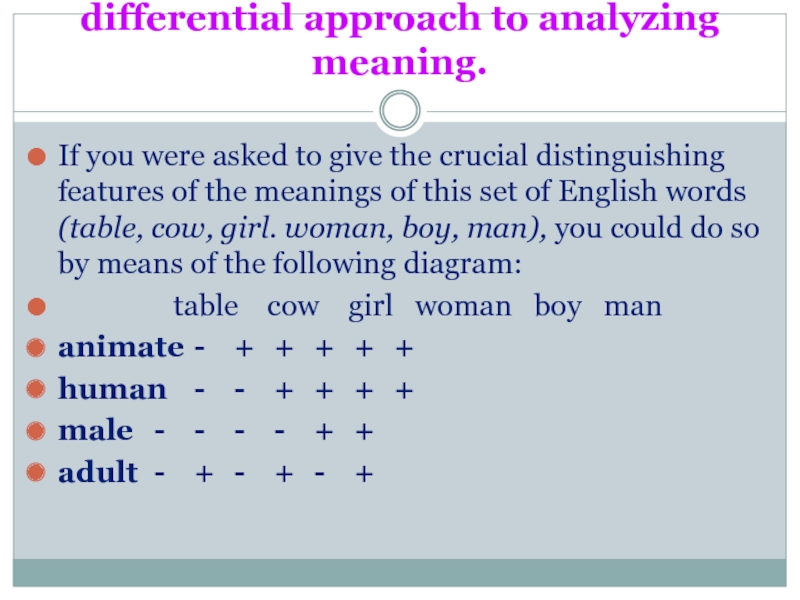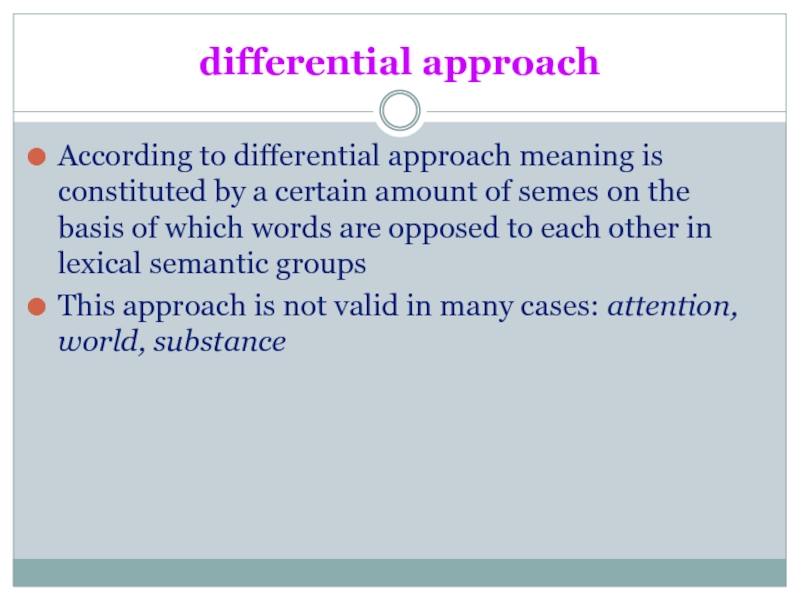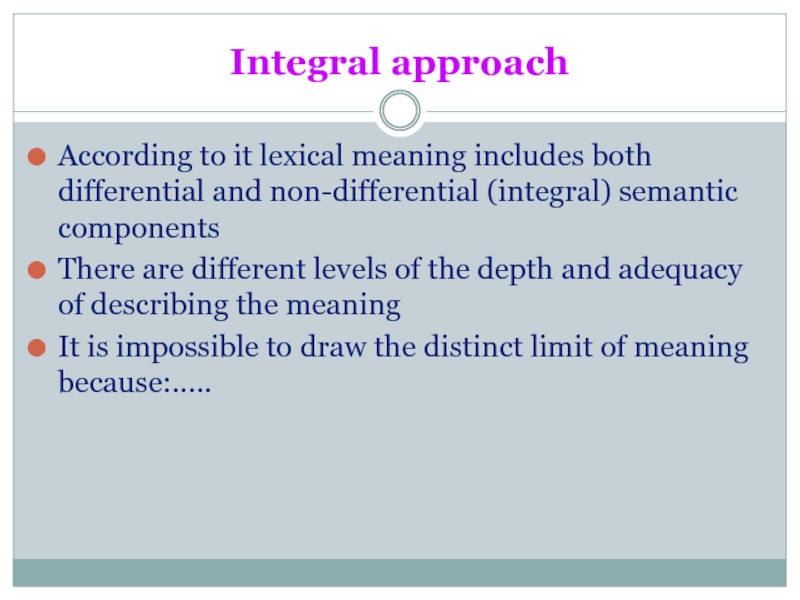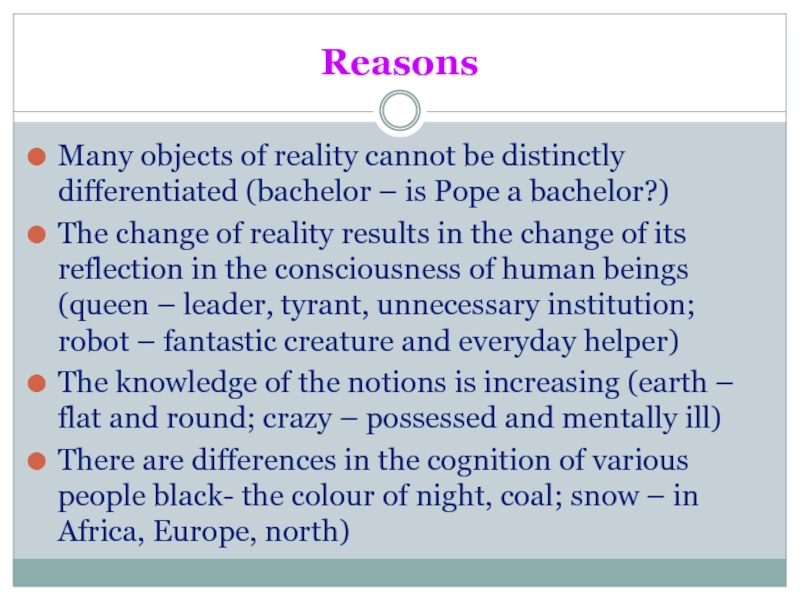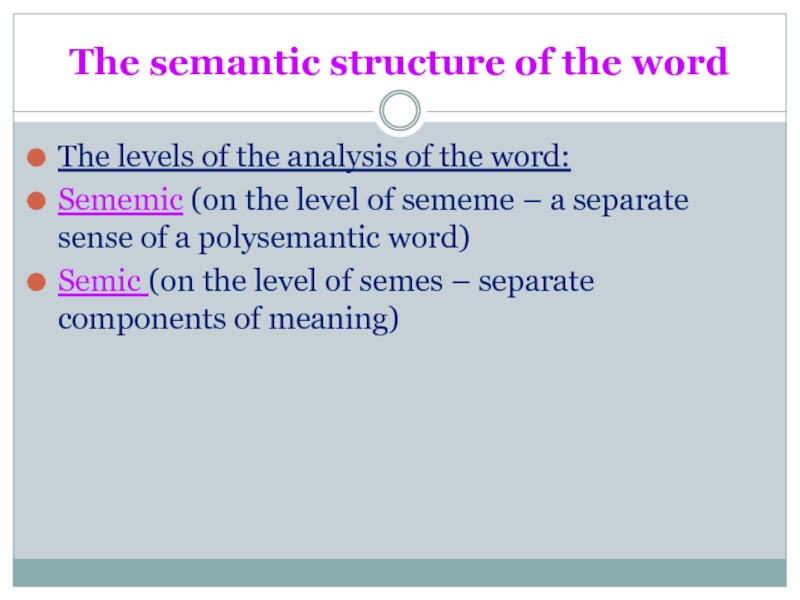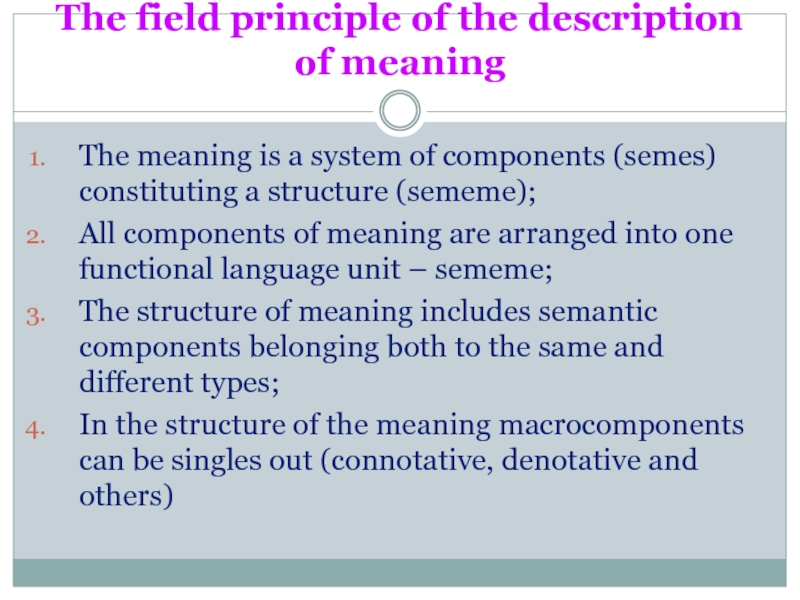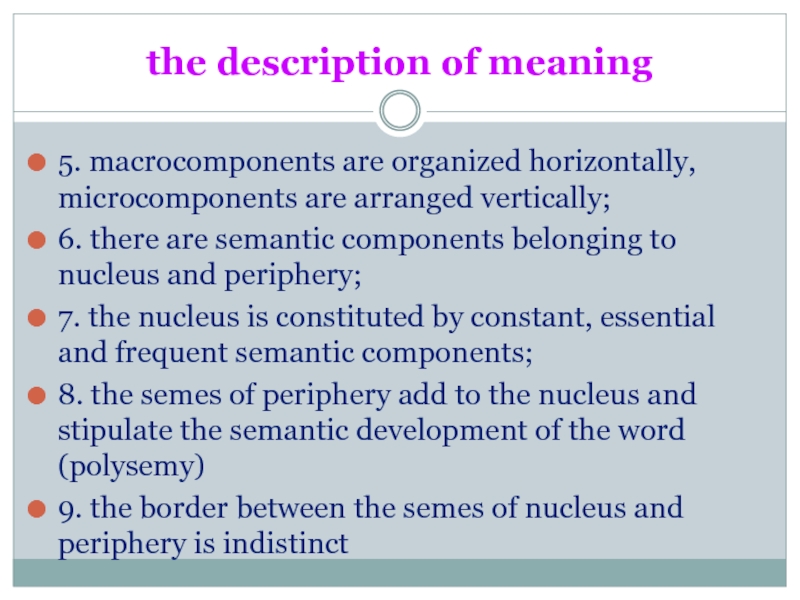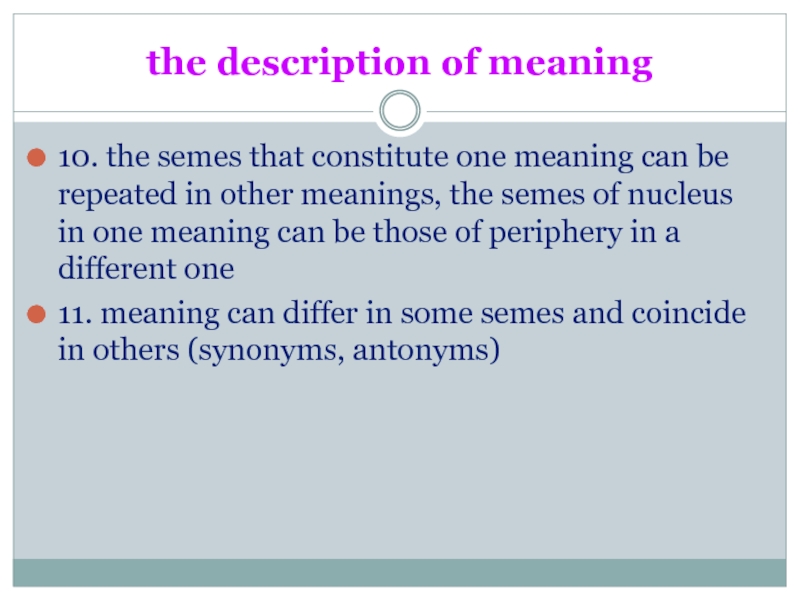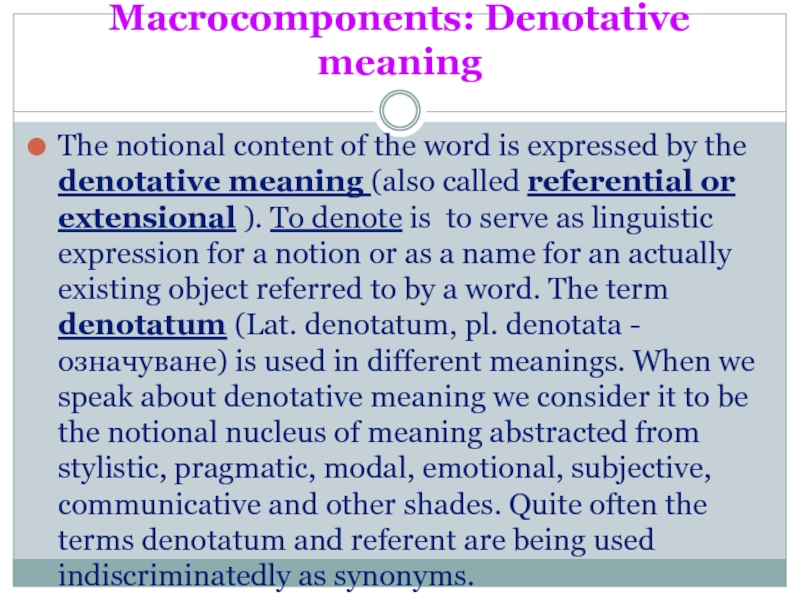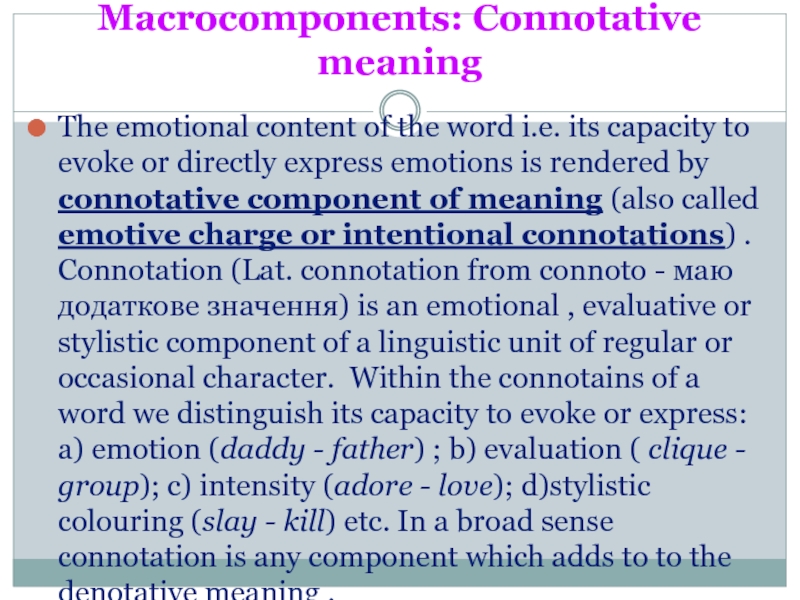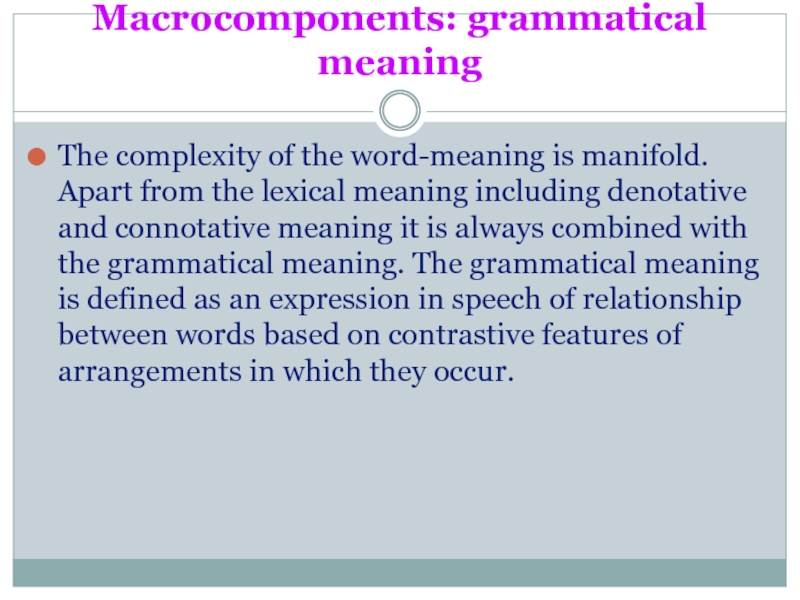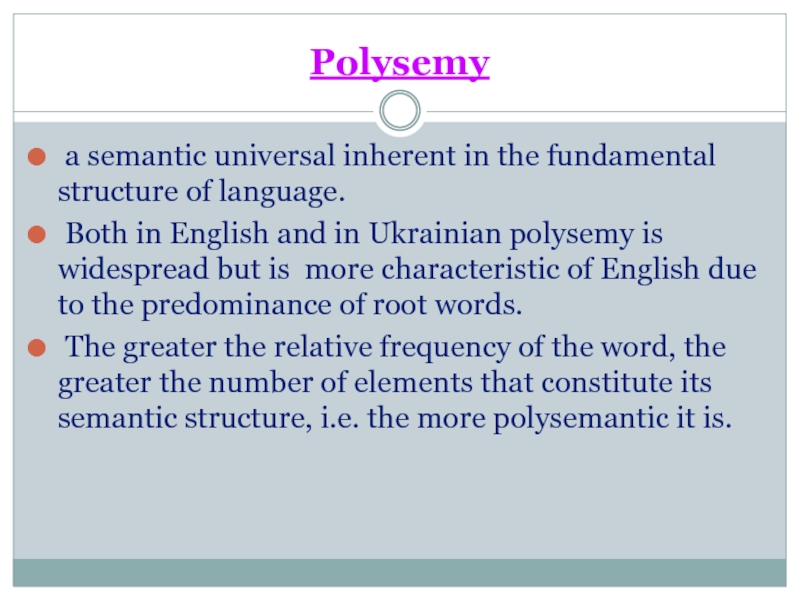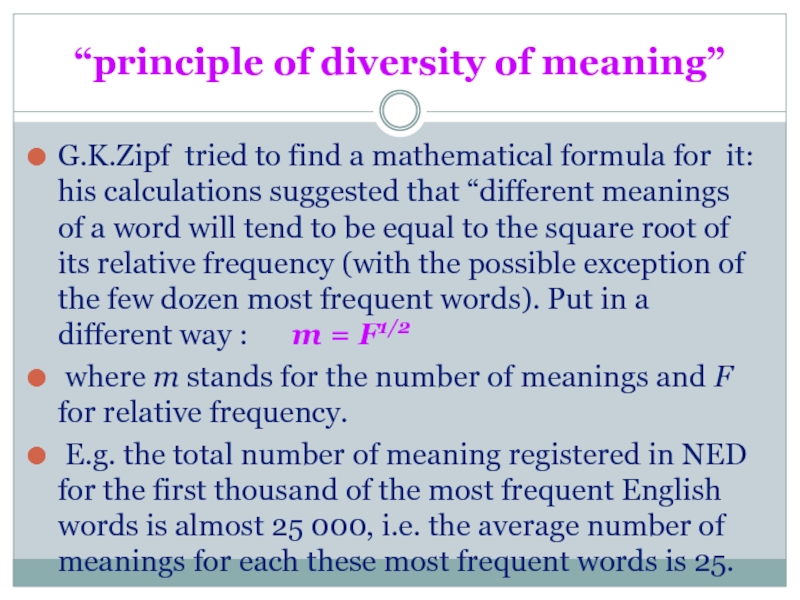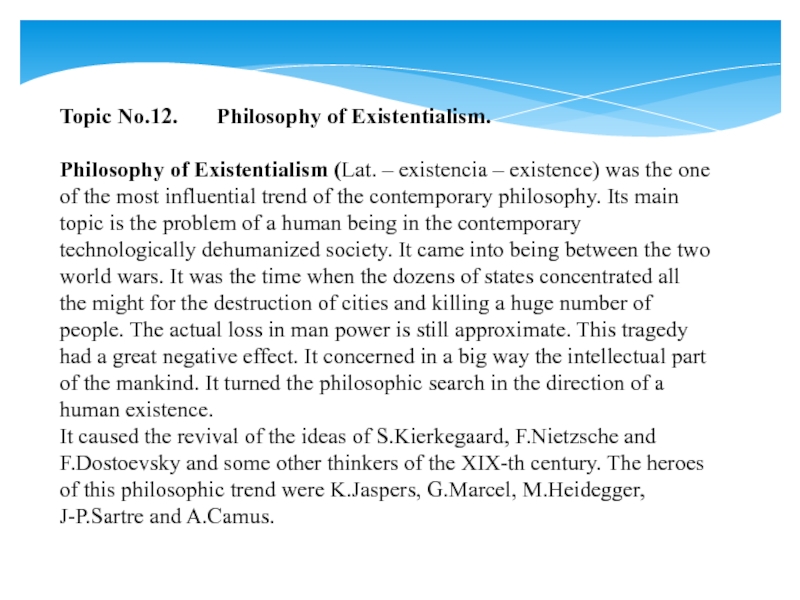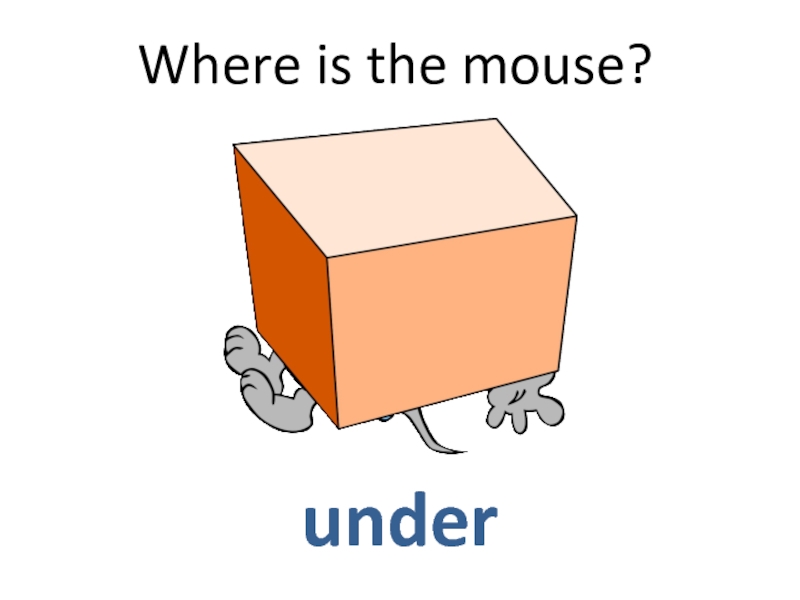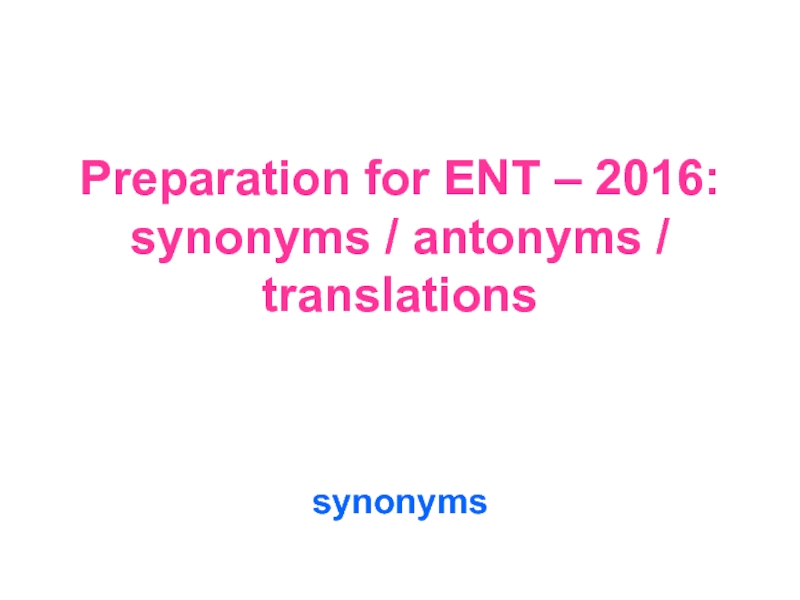- Главная
- Разное
- Дизайн
- Бизнес и предпринимательство
- Аналитика
- Образование
- Развлечения
- Красота и здоровье
- Финансы
- Государство
- Путешествия
- Спорт
- Недвижимость
- Армия
- Графика
- Культурология
- Еда и кулинария
- Лингвистика
- Английский язык
- Астрономия
- Алгебра
- Биология
- География
- Детские презентации
- Информатика
- История
- Литература
- Маркетинг
- Математика
- Медицина
- Менеджмент
- Музыка
- МХК
- Немецкий язык
- ОБЖ
- Обществознание
- Окружающий мир
- Педагогика
- Русский язык
- Технология
- Физика
- Философия
- Химия
- Шаблоны, картинки для презентаций
- Экология
- Экономика
- Юриспруденция
Lecture 6 Semantic Structure of English and Ukrainian Words презентация
Содержание
- 1. Lecture 6 Semantic Structure of English and Ukrainian Words
- 2. Lecture 6 Semantic Structure of English and
- 3. “Linguistics without meaning is meaningless.” Roman Jakobson
- 4. Plan 1. Semasiology as a branch
- 5. Semasiology as a branch of linguistics
- 6. diachronically synchronically studies the change in meaning
- 7. Ф The main objects of
- 8. terms semasiology and semantics According to prof.
- 9. ‘pure semantics’ refers to a branch of
- 10. SEMANTICS as the term semantics is widely
- 11. referential functional seeks to formulate the
- 12. THE TRIANGLE OF REFERENCE was introduces
- 13. Referential approach Some advocates of the referential
- 14. Ukrainian linguists Ukrainian linguists agree in one
- 15. componential analysis It is used for:
- 16. The contrastive study of the semantic structures
- 17. Semantic features (semes) How would a
- 18. Semantic features (semes) This studied sentence is
- 19. differential approach to analyzing meaning. If you
- 20. differential approach According to differential approach meaning
- 21. Integral approach According to it lexical meaning
- 22. Reasons Many objects of reality cannot be
- 23. The semantic structure of the word The
- 24. The field principle of the description of
- 25. the description of meaning 5. macrocomponents are
- 26. the description of meaning 10. the semes
- 27. Macrocomponents: Denotative meaning The notional content of
- 28. Macrocomponents: Connotative meaning The emotional content of
- 29. Macrocomponents: grammatical meaning The complexity of the
- 30. Polysemy a semantic universal inherent in
- 31. “principle of diversity of meaning” G.K.Zipf tried
Слайд 1
Ivan Franko National University
in Lviv
Lexicology
Hryhoriy Kochur
Nadiya Andreichuk, professor
nadiyaan@gmail.com
Слайд 2Lecture 6
Semantic Structure of English and Ukrainian Words
Contrast is the occurance
of different elements
to create interest
Слайд 4Plan
1. Semasiology as a branch of linguistics
2. Referential vs fuctional
3. Differential vs integral approach to meaning.
4. Componential analysis
5. The field principle of the description of meaning
6. Polysemy.
Слайд 5Semasiology as a branch of linguistics
SEMASIOLOGYь
Greek sēmasiā ‘signification’
(from δσημα -
Greek
logos ‘learning’
Слайд 6diachronically
synchronically
studies the change in meaning which words undergo
studies the semantic structures
Semasiology as a branch of linguistics
Слайд 7
Ф
The main objects of contrastive semasiological studies
- semantic development of
- relevant distinctive features and types of lexical meaning;
- polysemy and semantic structure of words;
- semantic grouping and connections in vocabulary systems i.e. synonyms, antonyms, terminological systems etc.
Слайд 8terms semasiology and semantics
According to prof. J.R.Firth
the English word for the
historical
of meaning was semasiology,
until in 1900 Breal’s book
(Essai de s`emantique) was
published in English
under the title of Semantics.
Слайд 9‘pure semantics’
refers to a branch of symbolic or mathematical logic originated
Слайд 10SEMANTICS
as the term semantics is widely accepted by a lot of
- the branch of linguistics which specializes in the study of meaning;
- the expressive aspect of language in general;
- the meaning of one particular word in all its varied aspects and nuances.
Слайд 11referential
functional
seeks to formulate the essence of meaning by establishing the interdependence
studies the functions of a word in speech and is concerned with how the meaning works
The Word and its Meaning
Слайд 12
THE TRIANGLE OF REFERENCE
was introduces by Charles Kay Ogden and Ivor
Слайд 13Referential approach
Some advocates of the referential approach point out that the
Others identify meaning with the referent.
Suggestions have also been made about meaning as the interrelation of the sound-form, concept and referent , but not as an objectively existing part of the objective sign. With this approach to word-meaning the analysis will inevitably operate with subjective mental processes and will not be able to bring scientific order in semantic analysis.
Слайд 14Ukrainian linguists
Ukrainian linguists agree in one basic principle: they all point
(А.М.Iвченко).
Слайд 15componential analysis
It is used for:
a) a detailed
b) providing a more adequate basis for translational equivalences;
c) the judging of the semantic compatibility as an important feature of style;
d) treating semantic transpositions of words, figurative extension in particular.
Слайд 16The contrastive study of the semantic structures of English and Ukrainian
should
Слайд 17Semantic features (semes)
How would a semantic approach help us to understand
The hamburger ate the man
My cat studied linguistics
A table was listening to some music
Notice that the oddness of these sentences does not derive from their syntactic structure. According to some basic syntactic rules for forming English sentences we have well-structured sentences:
The hamburger ate the man
NP + V + NP
Слайд 18Semantic features (semes)
This studied sentence is syntactically good but semantically odd.
One answer may relate to the components of the meaning of the noun hamburger which differ significantly from those of the noun man , especially when those nouns are used as subjects of the verb ate.
The kinds of nouns which can be subjects of the verb ate must denote entities which are capable of 'eating'.
Слайд 19differential approach to analyzing meaning.
If you were asked to give the
table cow girl woman boy man
animate - + + + + +
human - - + + + +
male - - - - + +
adult - + - + - +
Слайд 20differential approach
According to differential approach meaning is constituted by a certain
This approach is not valid in many cases: attention, world, substance
Слайд 21Integral approach
According to it lexical meaning includes both differential and non-differential
There are different levels of the depth and adequacy of describing the meaning
It is impossible to draw the distinct limit of meaning because:…..
Слайд 22Reasons
Many objects of reality cannot be distinctly differentiated (bachelor – is
The change of reality results in the change of its reflection in the consciousness of human beings (queen – leader, tyrant, unnecessary institution; robot – fantastic creature and everyday helper)
The knowledge of the notions is increasing (earth – flat and round; crazy – possessed and mentally ill)
There are differences in the cognition of various people black- the colour of night, coal; snow – in Africa, Europe, north)
cannot be distictly differentiated
Слайд 23The semantic structure of the word
The levels of the analysis of
Sememic (on the level of sememe – a separate sense of a polysemantic word)
Semic (on the level of semes – separate components of meaning)
Слайд 24The field principle of the description of meaning
The meaning is a
All components of meaning are arranged into one functional language unit – sememe;
The structure of meaning includes semantic components belonging both to the same and different types;
In the structure of the meaning macrocomponents can be singles out (connotative, denotative and others)
Слайд 25the description of meaning
5. macrocomponents are organized horizontally, microcomponents are arranged
6. there are semantic components belonging to nucleus and periphery;
7. the nucleus is constituted by constant, essential and frequent semantic components;
8. the semes of periphery add to the nucleus and stipulate the semantic development of the word (polysemy)
9. the border between the semes of nucleus and periphery is indistinct
Слайд 26the description of meaning
10. the semes that constitute one meaning can
11. meaning can differ in some semes and coincide in others (synonyms, antonyms)
Слайд 27Macrocomponents: Denotative meaning
The notional content of the word is expressed by
Слайд 28Macrocomponents: Connotative meaning
The emotional content of the word i.e. its capacity
Слайд 29Macrocomponents: grammatical meaning
The complexity of the word-meaning is manifold. Apart from
Слайд 30Polysemy
a semantic universal inherent in the fundamental structure of language.
The greater the relative frequency of the word, the greater the number of elements that constitute its semantic structure, i.e. the more polysemantic it is.
Слайд 31“principle of diversity of meaning”
G.K.Zipf tried to find a mathematical formula
where m stands for the number of meanings and F for relative frequency.
E.g. the total number of meaning registered in NED for the first thousand of the most frequent English words is almost 25 000, i.e. the average number of meanings for each these most frequent words is 25.
